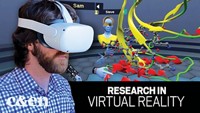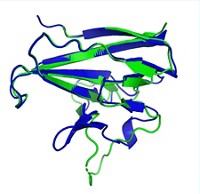Advertisement
Grab your lab coat. Let's get started
Welcome!
Welcome!
Create an account below to get 6 C&EN articles per month, receive newsletters and more - all free.
It seems this is your first time logging in online. Please enter the following information to continue.
As an ACS member you automatically get access to this site. All we need is few more details to create your reading experience.
Not you? Sign in with a different account.
Not you? Sign in with a different account.
ERROR 1
ERROR 1
ERROR 2
ERROR 2
ERROR 2
ERROR 2
ERROR 2
Password and Confirm password must match.
If you have an ACS member number, please enter it here so we can link this account to your membership. (optional)
ERROR 2
ACS values your privacy. By submitting your information, you are gaining access to C&EN and subscribing to our weekly newsletter. We use the information you provide to make your reading experience better, and we will never sell your data to third party members.
Environment
Will chemists tilt their heads for virtual reality?
The technology is creeping toward commodity status, bringing with it the prospect of immersive molecular visualization
by Jessica Morrison
April 4, 2016
| A version of this story appeared in
Volume 94, Issue 14

Most of the future we were promised in movies and television—real hoverboards and personal jet packs, flying cars, invisibility cloaks, and teleportation, for example—still feels whimsical and far-off. But it’s starting to look like virtual reality is on the brink of actual reality, and that might mean the chemistry lab of the future is nearer than we thought. Buzz is building quickly around the commercial potential for virtual reality (VR) headsets and augmented reality (AR) devices. If it achieves commodity status, VR could have an impact on chemistry from teaching middle school to designing therapeutic drugs, experts say.
At the outset, that excitement brings with it the immediate prospect of immersive molecular visualization for chemists accustomed to viewing three-dimensional models in two dimensions on a computer screen.
VR headsets such as the Oculus Rift and the HTC Vive create an immersive environment for the wearer using a stereoscopic display and head-tracking technology. With a turn of the wearer’s head, parts of the computer-generated, virtual world come into view naturally. With VR, the experience is contained within the opaque headset.
In AR, a device like the currently discontinued Google Glass creates a semi-immersive environment by overlaying computer-generated data onto the wearer’s mostly unobstructed field of view.
Sales of VR headsets, which have only just begun to ship, are expected to reach nearly $1 billion by the end of 2016, according to a global forecast from technology consultancy CCS Insight. This first generation of headsets isn’t cheap: The Oculus Rift is priced at $599 and the HTC Vive at $799. Building on the momentum predicted for 2016, shipments of VR headsets and AR devices could reach 96 million units by 2020.
It would be easy to dismiss the excitement as hype, but one university researcher says this is the Model T era for VR headsets.
John E. Stone, a senior research programmer in the Theoretical & Computational Biophysics Group at the University of Illinois, Urbana-Champaign, has been part of the community building molecular visualization tools for scientists long enough that he can spot a turning point. Stone, the lead developer for molecular visualization program VMD, likens the wave of VR headsets coming to the consumer market this year to the first mass-produced automobile.
“We’re getting the first practical, large-scale, mass-produced VR headsets, and they are very exciting and amazing to try right now, but you also have to have the perspective that the technology is going to explode when it really gets going,” he says.
It’s not hard to imagine a chemist wearing a VR headset to view a molecular structure at a poster session, Stone says. “What will happen is that we’ll go from an initial starting point where people use it just to look at things, and eventually they’ll start to use VR headsets to accomplish certain tasks.”
The VR headsets that are arriving now have benefited from decades of aerospace research that led to improved optics, and rapid growth in mobile phone technology has delivered cheap displays, accelerometers, and gyrometers, Stone adds. “We’ve gotten a lot from work that was done 30 years ago at very high cost. It’s only now that all the pieces are coming together.”
However, the current-generation VR headsets aren’t ready for the 9 to 5 just yet, Stone says. Though early setbacks such as slow refresh rates and lags in responsiveness that could lead to motion sickness have been much improved, more work needs to be done to develop users’ ability to interact with objects inside an immersive environment.
Attachments that allow VR headset wearers to use their hands to pull, select, or rotate—as one might want to do within a molecular structure—are primitive. And the virtual experience is a solitary one, at least until developers come up with a good way to link multiple headsets and provide interpersonal cues for the wearers.
But when current technological impediments are overcome, experts foresee a future for any chemist in which molecular visualization is hands-on, hazardous or inaccessible work is virtual but true to life, and teaching is truly immersive. With the introduction this year of the first widely available VR headsets, chemists can again start to imagine what the future might hold.
“Chemistry and computational biology were early adopters of advanced graphics for viewing molecules, and it was a very challenging problem,” Stone says. “This domain has been pushing those limits for a long time.”
By the late 1970s, chemists had imagined a future in which molecular graphics drawn on computers would replace hardware models. Steadily advancing computer technology would someday allow researchers to collect and process complex structural data to render space-filling molecules and interact with them in ways that had not yet reached technical feasibility.
The interactivity made possible by computers in the decades that followed is poised now to become immersive as software developers for molecular modeling, such as Stone, shift their gaze to VR.
At the University of Maryland, computer scientist Amitabh Varshney and his colleagues are merging advanced visualization techniques and big data to develop tools and applications for VR and AR. Varshney is the director of the University of Maryland Institute for Advanced Computer Studies, which is home to the Augmentarium, a VR and AR research laboratory created with funding from the National Science Foundation.
Varshney says VR will be a game changer for chemists because it brings together two complementary skill sets: spatial awareness and data analysis.
“Humans are very good at spatial reasoning and pattern recognition. Computers are very good at number crunching,” he says. “VR enables us to compute and visualize in a seamless way. Up until now, you could compute and visualize, but you were watching it as a detached observer.”
Varshney and his team have already developed AR support for viewing an Escherichia coli membrane ion channel as it opens and closes. It’s no leap for Varshney, who has worked on molecular visualization tools for drug design, to consider using VR to explore protein-ligand docking for drug development.
Our understanding of the way macromolecules work is dominated by four or five factors, Varshney says. “Spatial relationships and proximity drive our understanding of what’s happening at the atomic level.”
Viewing a complex arrangement of atoms and bonds from within—stooping down to peer over, under, and through a long-chain molecule—is fanciful, but within reach, he says.
In 2014, the cofounder of Oculus gave $31 million to the University of Maryland to fund a new computer science building and a scholarship in computer science. The Brendan Iribe Center for Computer Science & Innovation, to be named for the VR innovator and university alum, will support research in VR and AR.
Iribe has called VR the future of computing, “with an impact that will be as big as, if not bigger than, the jump to 3-D graphics or mobile devices.”
Even in these early days of VR, researchers such as Varshney and Stone expect immersion to provide a wholly new perspective to molecular visualization that could lead to insights about structure and connectivity.
“When you turn your head and a new part of a molecule comes into view, that is fundamentally more powerful than moving your hand a half an inch on a mouse,” Varshney says.





Join the conversation
Contact the reporter
Submit a Letter to the Editor for publication
Engage with us on Twitter